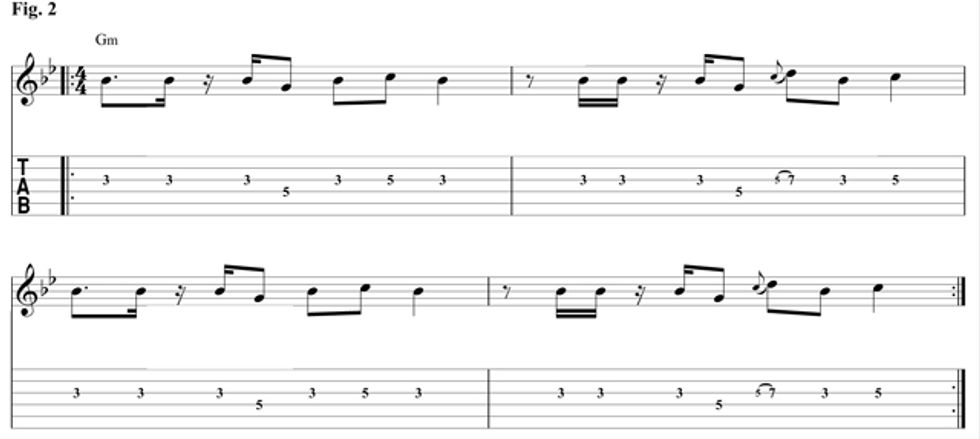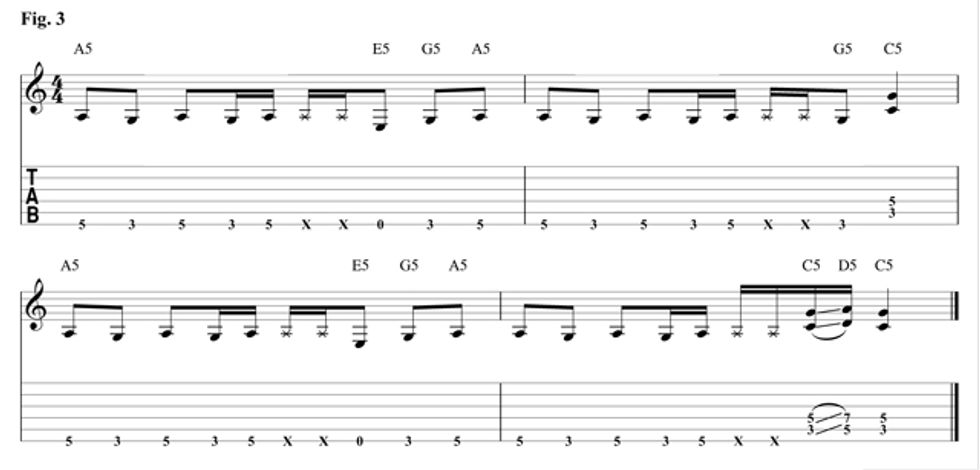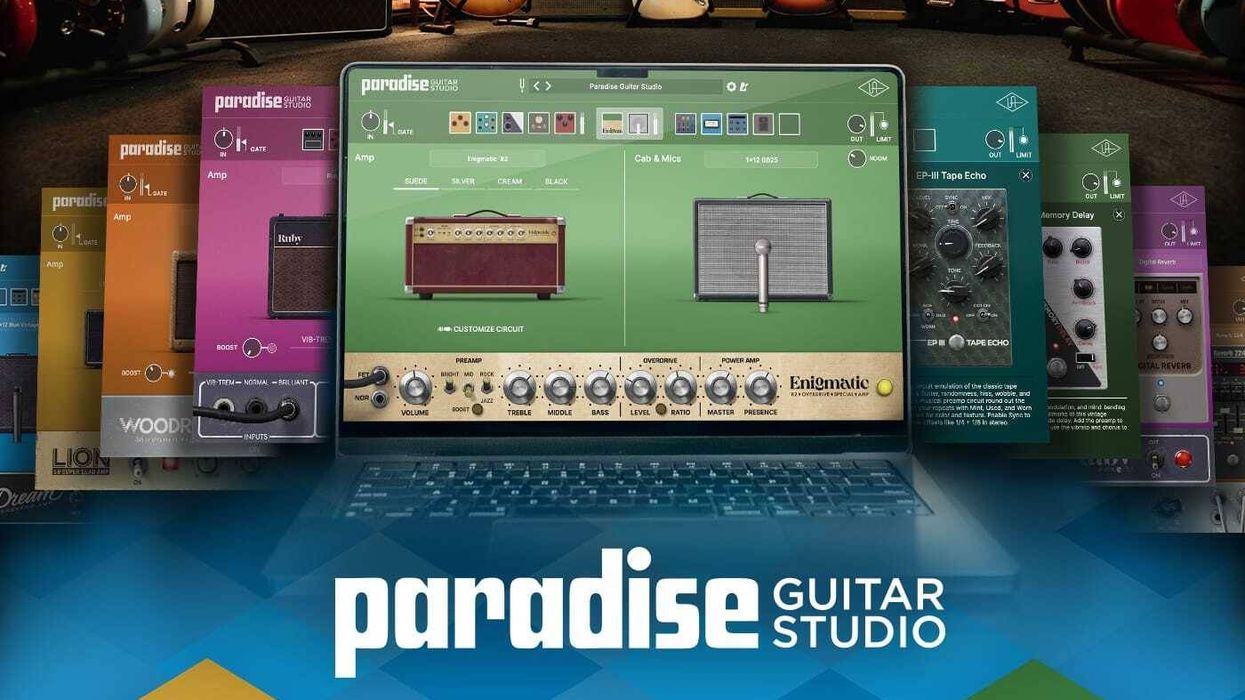Chops: Intermediate
Theory: Intermediate
Lesson Overview:
• Learn how to improve your sense of time and groove.
• Work on internalizing time in creative ways.
• Understand different polyrhythmic concepts.
Click here to download MP3s and a printable PDF of this lesson’s notation.
Tired of practicing scales with the metronome? Bored of a monotonous 4/4 click? Here are some fresh ways to improve your time and groove by giving the metronome a new perspective.
If you’ve received any sort of music education, you’ve likely heard a paraphrase of this idea: “You must practice with a metronome because time is one of the most important aspects of musicianship." Turns out, it’s all true. But how many of you actually practice with a metronome? How many of you do for a few minutes then stop to move on to something else? I was a first offender, until I found new and creative ways to use the pulse. It made me work on different aspects of time while making the session more fun.
Like many guitar players, in my formative years I practiced a lot with the metronome, working on technique and speed, mostly using scales and finger exercises. The perfect beat informed me when I was dragging or rushing, but while my technique improved, my time and groove didn’t. I felt frustrated that I could play fast lines but couldn’t really hold a solid groove. It wasn’t for lack of practicing with the metronome! It took a while to understand it was because I wasn’t practicing time.
So I started playing groove-based ideas with a quarter-note pulse—anything under the umbrella of “rhythm guitar playing”—and saw some improvement. My teacher at the time asked me to practice the standards we were working on “with the metronome on two and four,” to get a better sense of swing. Huh? I had never thought of that before. Getting locked in suddenly became much more challenging, but also more fun. It got my groove playing to the next level and my feel got better too.
As my musical tastes, abilities, and perspective evolved, I wanted to be able to manipulate time better, so I started practicing my groove playing with the metronome pulsing the dotted quarter-note and the dotted eighth-note. Now that was a real challenge! It really helped me internalize time, “feel” a phrase better and generally be more aware of spacing while getting locked in. Let’s explore some variations on this simple concept and dissect the benefits of these new time keeping methods.
Fig. 1 is a fairly straight-ahead strumming idea with the metronome marking beats 2 and 4. There is suddenly twice as much space between pulses and therefore twice as much room for error—don’t get discouraged if you have a hard time locking this groove in. To get a good sense of the spacing, try playing straight eighth-notes while muting the strings until you feel really locked in. Then, move on to the strummed chord progression and notice how different your groove feels against the new pulse. The “two and four” pulse is like an internal backbeat to your own groove. Ideally, you want to get to the point where you don’t have to listen for beats 2 and 4, and where you don’t “hear” it either. If you are exactly locked in, your sound will take over the beeping of the metronome.
Each musical example will have two (or three) different sound clips. In this first one, you will hear the example played first with a quarter-note pulse and then with a dotted quarter-note pulse. Again, get those eighth-notes going first, then try the progression. Obviously the metronome now falls on different spots, but it shouldn’t take long before you internalize the “original” tempo and predict where those dotted quarter-note beats will fall. As the four-measure chord progression loops around, the pulses will fall in different places until you loop it all three times. On the fourth time, the dotted quarter-note pulse will line back up with the “1” of the phrase. Apply this same idea to all of the rest of the examples.
Next, we have Fig. 2, which is a funky single-note line. We start with the click on beats 2 and 4 and then move to the dotted quarter-note pulse.
We have a slow rock riff in Fig. 3. This time we start with a quarter-note pulse and then move to a dotted eighth-note pulse.
In Fig. 4 we have a power chord-filled rock riff that moves from a basic quarter-note pulse to a dotted-quarter feel.
Moving over to funk music, we have Fig. 5with a guitar arrangement loosely emulating bass and horn lines. The first audio example has the click on beats 2 and 4 and then a dotted eighth-note pulse.
Finally, for some mathematic fun, here’s a polyrhythmic idea (Fig. 6) where double-stops are played a dotted eighth-note apart, until the phrase turns around and the pattern breaks to land back on the “1.” For this exercise, we have three audio examples. The first one is with a quarter-note pulse, the second one is with a dotted eighth-note pulse, and the final one is with me counting the quarter-notes out loud so you can hear where everything lines up.
During the first phrase, those hits will line up exactly with the metronome, until the phrase turns around. At that point, the pattern breaks to land the new phrase back on "1." The dotted eighth-note of the metronome keeps going, so the guitar and the metronome won’t line up during that phrase or the next one. They finally land back together on the fourth phrase. Have fun with this one!
The different pulses serve different purposes, but all work toward the general goal of improving your perception of time. The quarter-note pulse is a good way to work on accuracy, while the “two and four” pulse helps your sense of space and groove, and offers a bit of a swing. The dotted pulses help you internalize time on a deeper level, as they both have you focus on getting locked in against an underlying quarter-note pulse that should almost be second nature. Try practicing lines and solo licks with this method to get your lead playing more grooving.





























